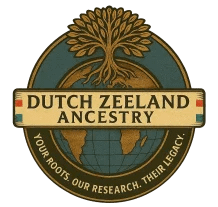An Heirloom That Spoke Up.
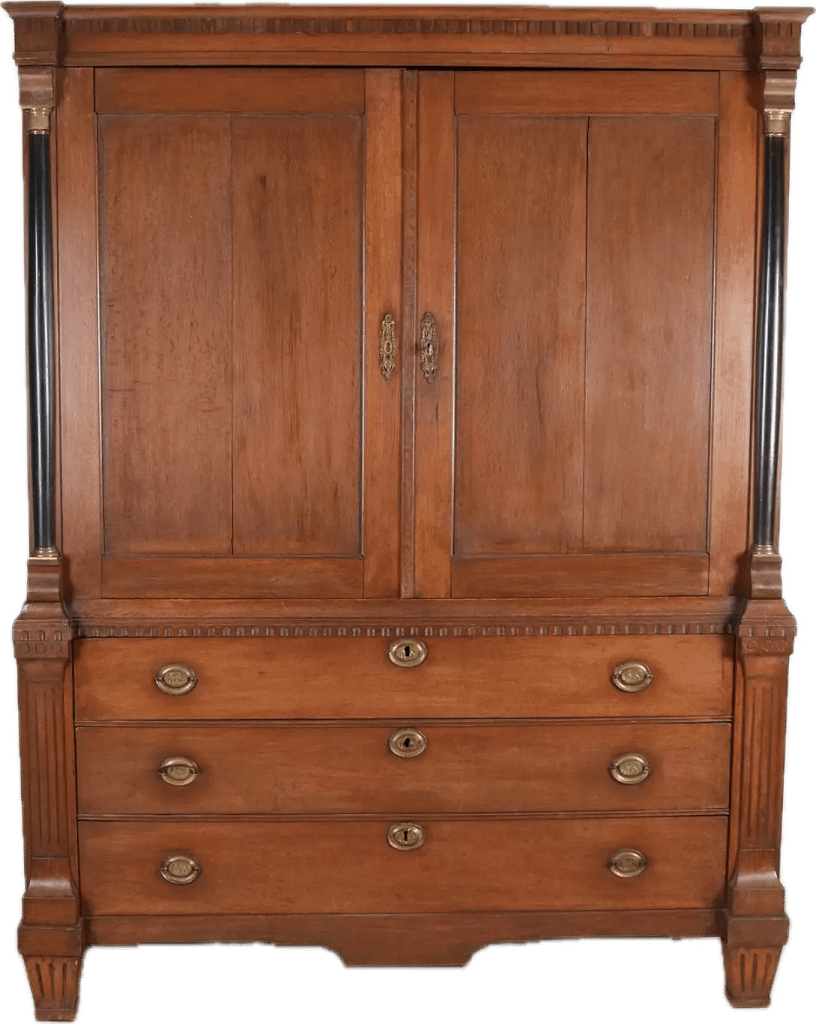
A Cabinet as the Beginning of My Dutch Family Research.
It all started with a cabinet. Not just any cabinet, but a stately, dark wooden piece that I inherited from my uncle – who told me it had been “in the family for generations.” There was a story attached to it, he said. Something about an ancestor, a wedding, and a village fair that hadn’t quite gone as planned. Supposedly, my great-great-grandfather, Jan Adriaanzn Hanse, had to marry a woman he got pregnant during the local fair. As part of the arrangement – or perhaps compensation – he was given a small farm and that very cabinet. The woman in question came from the Smallegange family, a wealthy lineage with deep roots in Zeeland’s history. According to family lore, that’s how the cabinet entered our family.
That cabinet had been quietly standing in the homes of my ancestors and parents, and now mine – but suddenly, it began to speak. Who was this Jan, really? And was the story even true? That one heirloom – and the mystery wrapped around it – launched my first Dutch family history research.
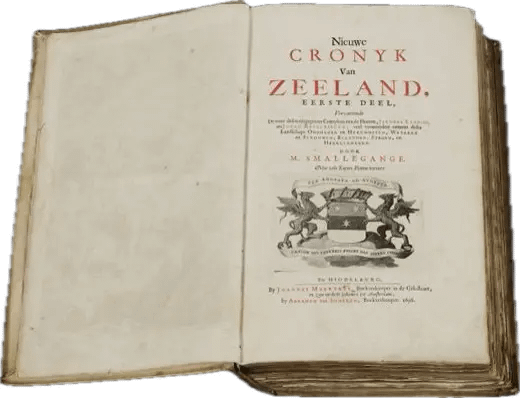
What Could This Cabinet Reveal About My Ancestry in Zeeland?
Getting the Facts Straight
With the tale of a young man forced into marriage after a summer fling at a fair, I began to investigate. Not just in archives, but in the cabinet itself. What kind of piece was it, really? How old? I soon concluded the cabinet was likely built around 1800 – based on its detailed craftsmanship and traditional dovetail joints.
That was odd: Jan Adriaanzn married in 1860. That’s a sixty-year gap. It didn’t add up that he had received the cabinet as a wedding gift. Of course, heirlooms get passed down – perhaps it was already in the farmhouse he moved into. That seemed more likely.
Even more interesting: Jan was already living on that same farm before his marriage, which was owned by his uncle. After the wedding, he simply stayed there – now with his wife Cornelia. That doesn’t fit the narrative of an unexpected wedding followed by being gifted land and furniture.
Archive Research Became My Compass
Determined to take the family story seriously, I turned to archival research. Who was Jan Adriaanzn Hanse? When did he marry, where did he live, what surrounded his timeline?
The documents were clear: Jan married at age 39 – quite late for the mid-1800s. And their first child was born 10 months and 14 days after the wedding. Nothing indicated an urgent marriage.
Looking Deeper into the Family Tree – Tracing the Origins of a Family Tale
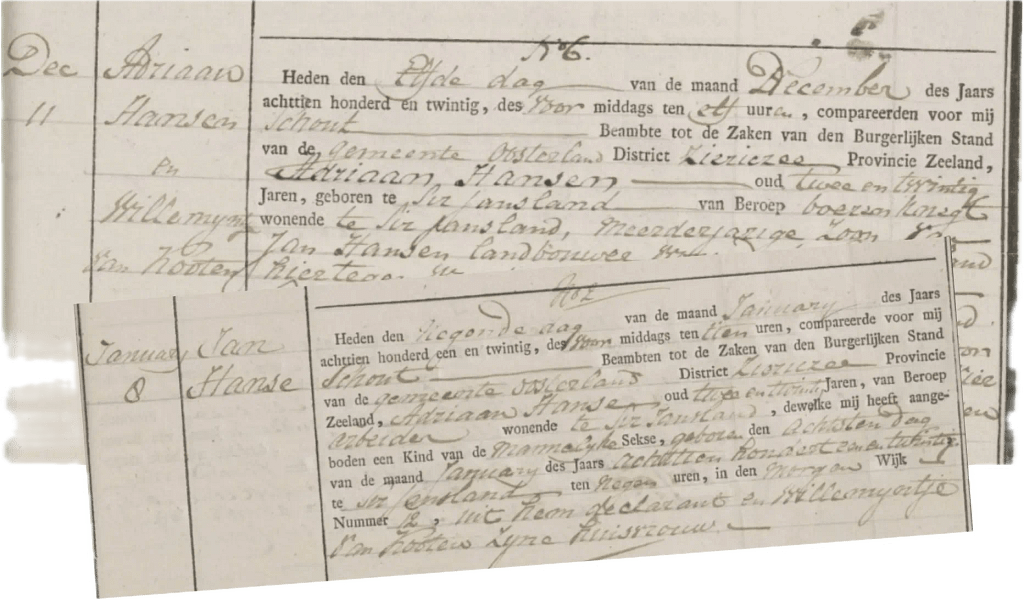
From Father to Son – Stories Passed On
My curiosity wasn’t satisfied. If the story didn’t fit Jan, could it have applied to a previous generation? I dug further into the family tree and came upon his father: Adriaan Janszn Hanse. And suddenly, the narrative began to make sense.
Adriaan married Willemijntje van Kooten on December 11, 1820. Twenty-five days later, on January 8, 1821, their first child was born. Clearly, she had already been pregnant. If this had happened at a fair, the timeline would match perfectly.
Nine months before that birth takes us back to early April. And in 1821, Easter Monday fell on April 16 – a day traditionally filled with fairs and public celebrations in Zeeland. That could well have been the “fair” that family lore remembered.

A Farm, a Mother, and 100 acer of Land
There was more: Adriaan didn’t have to find housing after his marriage. He moved into a farm owned by his father, Jan Jacobsen Hanse. Though Adriaan’s wife was the daughter of a farmer, she didn’t come from significant wealth. The family fortune came from his mother – Leendrina Cornelisdr de Jonge – who had inherited a substantial estate. At one point, they owned 100 acer of land, making them the largest landowners in Oosterland after the local lord.
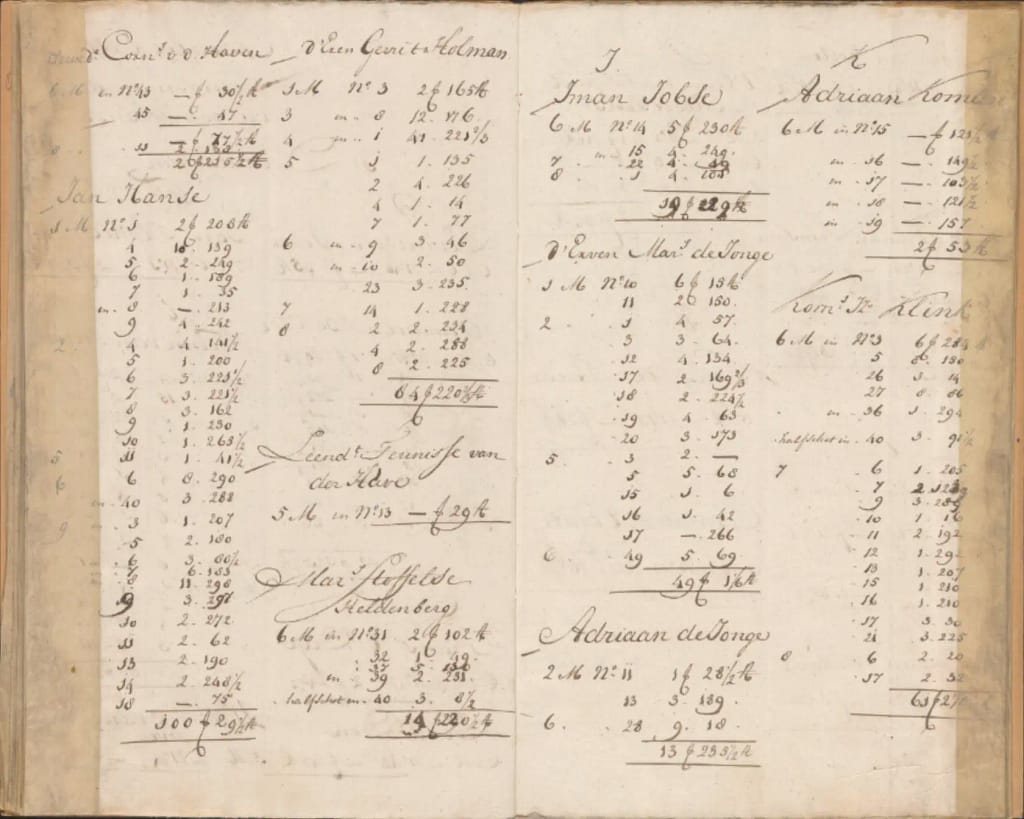
To enable the collection of taxes, all immovable property was recorded in the Gaarboek once every seven years. (Zeeuws Archives)
A Family Story Fit for a Legacy Book
It all started to fall into place: a couple likely marrying because of a pregnancy, a farm ready for them, and wealth on the groom’s side. The story didn’t apply to Jan Adriaanzn – but for his father Adriaan, it suddenly made perfect sense.
We may never know for sure. But the pieces fit just enough to respect the tale as a half-true, half-evolving family memory. And that’s often how these stories work: not false, but blurred by time.
Family Stories Deserve To Be Explored
That moment changed everything for me. Dutch family history research isn’t just about collecting names and dates. It’s about tracing stories, understanding legacy, and approaching misremembered truths with grace. It started with a cabinet – and became a lifelong journey through generations, archives, and Zeeland soil.
What Family History Is Still Waiting in Your Cabinet?
Every family has a story. An heirloom, a rumor, a forgotten name in an old marriage register. Sometimes they’re true, sometimes they hold only a whisper of fact – but they always point toward something worth discovering.
Start with that one question. Revisit that one photo, that vague tale, or that one keepsake in the attic. Want to explore your Dutch roots or turn your genealogy into a family legacy book? Or are you stuck in your research and looking for help with Dutch genealogy archives?
Let me help you trace your Zeeland ancestry – and turn your family history into something worth passing down.

